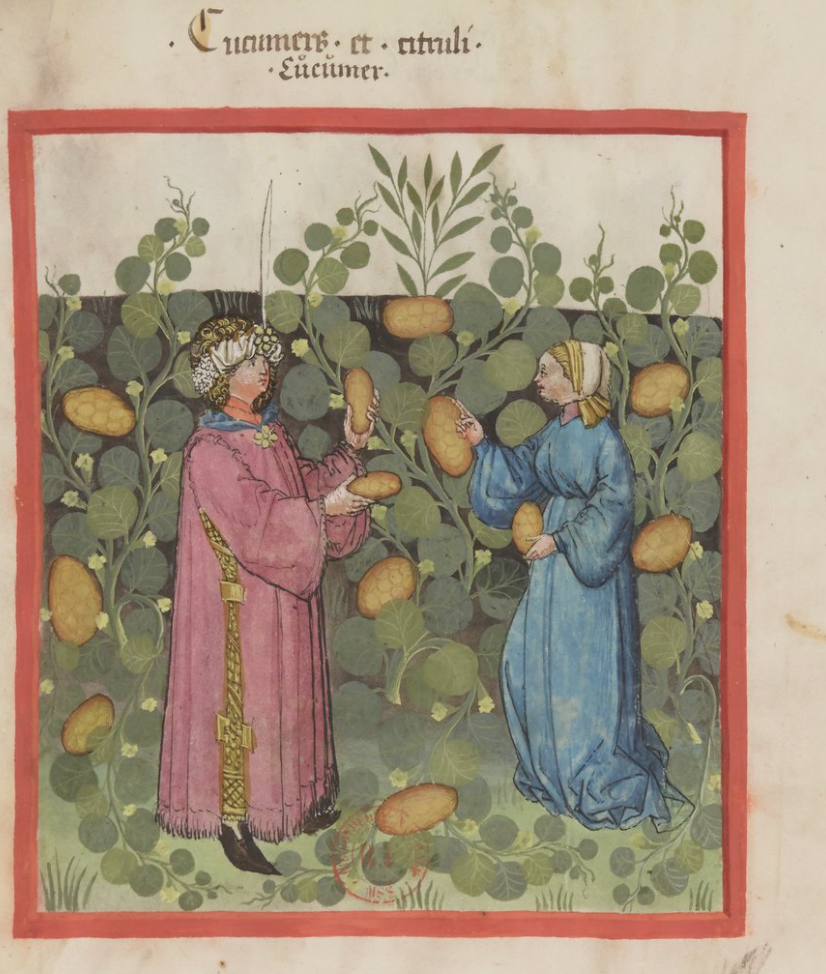The cucumber (Cucumis sativus) is a member of the Cucurbitaceae family, which also includes gourds and melons, and its cultivation history goes back at least 4,000 years. It probably originated on the Indian sub-Continent, but was already known to the ancient Mesoptamians and Greeks.
The route taken by the cucumber from its Indian homeland to the Mediterranean is revealed in the common Arabic words for it — khiyār (خيار) and qiththā (قثاء). The former is a Persian loanword, whereas the latter goes back to the Assyrian qiššū (which may, in fact, be related to the older Sumerian úkuš). The word qiththā ((or quththā’) appears in the Qur’ān (2:61) and also referred to the snake-cucumber, aka snake melon (Cucumis melo var. flexuosus), which was sometimes known as faqqūs in the literature. Both terms are also thought to denote the chate melon (Cucumis melo var. chate). Unripe snake lemons, called ‘ajjur (related to ʿajr, ‘green, unripe’) appear in a number of Syrian and Egyptian cookery books, as an ingredient in stews, or topped or stuffed with meat and vegetables. Cucumbers are also called for in cold dishes (بوارد, bawārid), pickled, or used as a garnish. Sometimes, the juice extracted from cucumber pulp is also mentioned. In any event, cucumbers were more used in the Near East and were a rarity in Andalusian and North African cuisines.
In the medical tradition, the cucumber’s cold and moist properties caused it to be prescribed for a hot liver, as a diuretic and antipyretic, but it was said to cause stomach aches. It was also used to sweeten the breath. The best qiththā’ were said to be from Nisabur.


